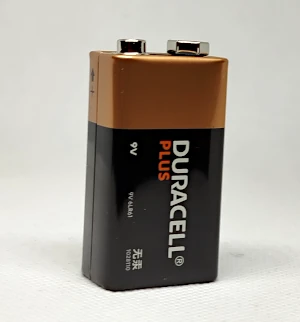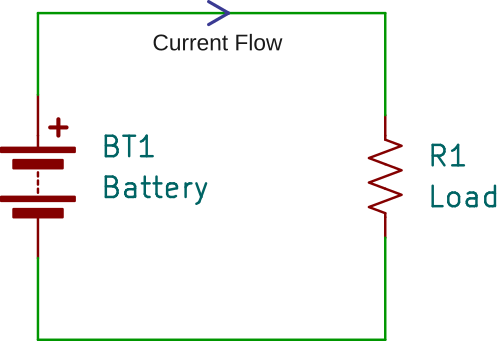Understanding voltage, current, and resistance is fundamental to learning electronics. These three properties form the foundation of how electrical circuits work. Whether you’re a beginner or looking to refresh your knowledge, this guide will help you grasp these essential concepts in a clear and practical way.
Table of Contents
- What is Voltage?
- What is Current?
- What is Resistance?
- Ohm’s Law: The Relationship Between Voltage, Current, and Resistance
- Practical Applications of Voltage, Current, and Resistance
- Key Takeaways about Voltage, Current, and Resistance
- Next Steps on Voltage, Current, and Resistance
- Further Reading about Voltage, Current, and Resistance
What is Voltage?
Voltage, also called electrical potential difference, is the force that pushes electrons through a conductor, like a wire. It is measured in volts (V) and is often provided by a power source such as a battery or a power supply.
Analogy: Water Pressure
To understand voltage, think of an electrical circuit as a water system:
- Voltage is like water pressure in a pipe—it determines how strongly the water (electricity) is pushed through.
- Higher voltage means a greater force moving electrons through a circuit.
Common Sources of Voltage
- A AA battery* provides 1.5V
- A 9V battery provides 9 volts
- 3V or 1.5V button battery, for example the 3V CR2032 battery
- A typical household power outlet supplies 120V or 230V AC
* Technically an AA “battery” is actually a cell. Batteries consist of two or more cells.

What is Current?
Current is the flow of electric charge through a conductor. It is measured in amperes (A) and represents how many electrons are moving through a circuit per second. The following circuit diagram illustrates current flow in a simple DC circuit.

Analogy: Water Flow
Continuing with the water pipe analogy:
- Current is like the amount of water flowing through the pipe.
- More current means more electrons flowing through a circuit.
Types of Current
- Direct Current (DC): Flows in one direction (e.g., batteries, USB power).
- Alternating Current (AC): Changes direction periodically (e.g., household electricity).
What is Resistance?
Resistance is the opposition to the flow of electric current. It is measured in ohms (Ω) and determines how much a material resists the movement of electrons. Resistance can be added to an electronic circuit by inserting a resistor of the desired value. The following image shows an example of resistors used in electronics.

Analogy: Narrow vs. Wide Pipes
- Resistance is like a narrow section in a water pipe—it slows down the flow of water (electricity).
- The higher the resistance, the harder it is for current to flow.
Factors Affecting Resistance
- Material: Conductors like copper have low resistance, while insulators like rubber have high resistance.
- Length of wire: Longer wires have more resistance.
- Thickness of wire: Thicker wires have less resistance. See the wire size chart for more information on wire diameters.
- Temperature: Higher temperatures increase resistance in most materials.
Ohm’s Law: The Relationship Between Voltage, Current, and Resistance
The relationship between voltage, current, and resistance is defined by Ohm’s Law:
V = I × R
Where:
- V = Voltage (volts)
- I = Current (amperes)
- R = Resistance (ohms)
How Ohm’s Law Works
- If you increase the voltage, the current will increase (if resistance stays the same).
- If you increase the resistance, the current will decrease (if voltage stays the same).
Example Calculation
If a circuit has a 9V battery and a resistor of 3Ω, we can calculate the current:
The calculation using keyboard characters:
I = V / R
= 9V / 3Ω
= 3AThe calculation using mathematical notation:
This means a current of 3 amperes flows through the circuit.
Practical Applications of Voltage, Current, and Resistance
Understanding these three properties is essential for designing and troubleshooting electronic circuits. Here are some examples:
- Choosing the right resistor: When working with LEDs, you need to limit current using a resistor to prevent burning out the LED.
- Measuring voltage and current: Using a multimeter, you can test batteries, check circuits, and diagnose electrical issues.
- Building circuits safely: Knowing how voltage and current interact helps prevent overheating components and short circuits. This can be done by calculating resistor power.
Key Takeaways about Voltage, Current, and Resistance
- Voltage (V): Pushes electrons through a circuit (like water pressure).
- Current (A): The flow of electrons (like water flow).
- Resistance (Ω): Opposes the flow of current (like pipe width affecting water flow).
- Ohm’s Law: Defines the relationship between voltage, current, and resistance.
Understanding these basics will set you on the path to mastering electronics. Whether you’re experimenting with circuits, building projects, or troubleshooting devices, voltage, current, and resistance will always be at the core of your work!
Next Steps on Voltage, Current, and Resistance
If you’re eager to dive deeper into electronics, check out our other beginner-friendly articles on circuit components, breadboarding, and basic soldering techniques!
Further Reading about Voltage, Current, and Resistance
- Conventional Current vs Electron Flow
- Ohm’s Law Made Simple: Voltage, Current, Resistance
- What Is Current Flow? Understand It Easily
